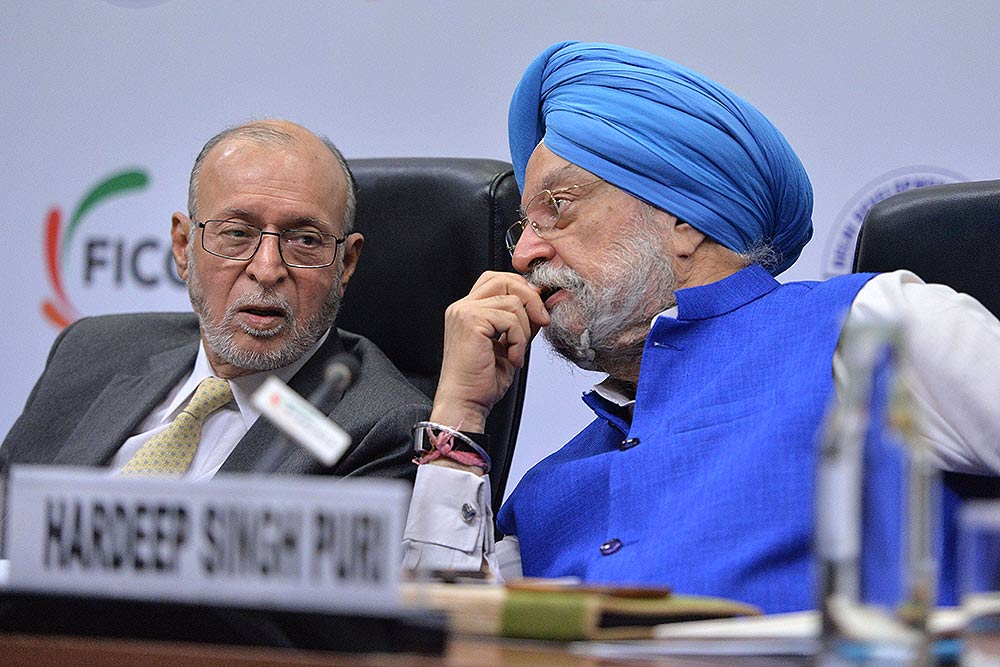In May, the GMR Group-run country’s busiest airport – the Indira Gandhi International (IGIA), Delhi – announced that it had performed 1,000 TaxiBot-aided flights since the introduction of fuel and carbon emission-saving equipment at its facility in 2019, which helped various airlines save 214,000 litres of jet fuel, besides reducing around 532 tonnes of carbon emissions.
A TaxiBot is used to tow an aircraft from the terminal gate to the take off point and return it to the gate after landing. The private airport operator said the use of TaxiBots is part of its strategic initiatives to reduce carbon emissions by aircraft and also to become a ‘net-zero carbon emission airport’ by 2030.
‘Greening’ the aviation sector
According to international airlines global body International Air Transport Association (IATA), India is set to become the world’s third-largest air passenger market after China and the United States within the next 10 years.
The government’s regional connectivity scheme, Ude Desh ka Aam Naagrik (UDAN), will contribute to emissions of carbon because more fuel will be burnt with the increase in flights.
The 2015 Paris Agreement excluded the international aviation sector due to difficulties in attributing emissions – from complex international supply chains to individual countries.
As a result, the International Civil Aviation Organization’s (ICAO) member states designed the Carbon Offsetting and Reduction Scheme for International Aviation (CORSIA) with an initial target of achieving carbon-neutral growth for the sector from 2020.
ICAO in 2016 had warned that the aviation industry needs to prepare for severe disruptions as a result of climate change and that it needs to make full use of clean technology and policy tools in order to reduce its carbon footprint along with other environmental impacts.
While over 88 states agreed to pilot CORSIA scheme from 2021-2023, India is currently working with its own national targets for the aviation sector to remain compliant with its Nationally Determined Contributions (NDCs) and move towards carbon-neutral flying.
In 2019, India came out with a white paper on National Green Aviation Policy, which was published with inputs from key aviation stakeholders, including the Ministry of Environment, Forest and Climate Change (MoEFCC); Ministry of Petroleum and Natural Gas; the Directorate General of Civil Aviation (DGCA), airport operators and airlines.
In March, the then civil aviation minister Hardeep Singh Puri informed the Rajya Sabha that his ministry had not formulated any policy on green aviation.
“Air traffic management needs to be equipped with the latest technologies for best management of aircraft arrivals and departures so that they save on fuel,” said Mukesh Yadav, senior associate at Indian Institute for Human Settlements.
Sustainable aviation fuel
Back home, the World Economic Forum’s (WEF) Clean Skies for Tomorrow (CST) initiative has brought together an Indian community of private and public institutions with a shared vision of scaling production and use of sustainable aviation fuel (SAF). CST India initiative established a specific goal to transport 100 million domestic passengers on at least 10% blended fuel with SAF by 2030.
WEF in a blueprint titled ‘Deploying Sustainable Aviation Fuels at Scale in India’ in mid-June revealed that SAF is the most achievable and effective pathway to reducing aviation’s lifecycle emissions in the immediate future.
It also proposed key methods, cost-sharing models, and economic and environmental benefits for accelerating the SAF industry in India.
Yadav said controlling carbon emission is not very easy in India. “For a government to bring about a change in such an issue requires global help. Usage of biofuel is one of the most important initiatives that need to be undertaken in order to control carbon emission, but not much has been done by the government,” said Yadav.
Biofuels typically refers to fuels produced from biological resources (plant or animal material). However, current technology allows fuel to be produced from other alternative sources, including non-biological resources.
cording to Yadav, biofuel supply is a major concern for India as there are environmental challenges. “The infrastructure required for biofuel is also a major challenge,” he added.
India’s sustainable aviation initiative
Two budget carriers, SpiceJet and IndiGo, in 2018 operated test flights determining the feasibility of using biofuels, which reduces emissions. However, there is no further update either by the airline or DGCA on these trial flights, said Yadav.
“It seems that DGCA is not working on the goal with enthusiasm and doesn’t seem to have done anything ahead,” Yadav alleged.
Sources in the aviation ministry said that while the existing airports are working towards making their airports greener, new airports are focussing on sustainability. An example of such an airport is the international airport coming up at Noida, which has recently submitted its plan, according to them.
“It will be having electric vehicles and also work with the latest air traffic management techniques for better coordination to save ground time of an aircraft, thus reducing the consumption of fuel. It will also be equipped with autonomous taxiing using TaxiBot or WheelTug operations.”
According to GMR, which runs airports in Delhi and Hyderabad, both the airports have taken a number of proactive measures to reduce greenhouse gas (GHG) emissions.
“Currently both these airports are working on major expansion projects in which significant investment is being done for technological upgradation. Once completed, these projects will result in state-of-the-art green infrastructures,” said a GMR Group spokesperson.
The spokesperson added, “Both the airports are working closely with air traffic control (ATC), airlines, ground-handling agencies as well as other stakeholders in improving the overall operational efficiency and reduce fuel consumption and emissions.”
Both the airports have adopted operational improvement measure – Airport Collaborative Decision Making (A-CDM) – to reduce the holding time and delay, and saved significant amounts of emissions by avoiding unnecessary fuel burning, he emphasised.
According to IndiGo, the automation of its ground support equipment has reduced the carbon emissions by almost 5% equivalent, which is equivalent to 1246 tons.
“Apart from investing in the new NEO aircraft – replacing the older generation CEOs (current engine option), which reduces fuel usage by 15% and GHG emissions during flights – we adopted various innovative solutions in both passenger and freight services,” said the airline spokesperson.
Sources said Indian airports are now adopting new ways to implement additions and changes looking at the foreign airports which include usage of renewable sources of energy.
“Building green airports with environmentally-friendly infrastructure and renewable sources of energy is essential,” Yadav said, adding that in 2015, Cochin international airport became the first in the world to be fully powered by solar panels with the inauguration of a 12 MW (megawatt) solar power plant.
In January, the airport commissioned a floating solar power plant having a capacity of 452 Kilowatt-hours (KWh), in a move towards self-sustainability of power.
Airport designing too plays an important role, highlighted Yadav.
“The government also needs to encourage airport operators and airlines towards sustainability. This requires good funds whereas the sector currently is in heavy losses due to the pandemic. It needs to introspect on what kind of infrastructure is required to make airports greener; how will the requirement of using less fuel or using biofuel be fulfilled,” Yadav added.

देश में एक करोड़ यात्री प्रतिदिन कर रहे हैं मेट्रो की सवारी: पुरी ..

Union Minister for Petroleum and Natural Gas and Housing and Urban Affairs, Hardeep Singh Puri addressing a press conference in ..

Joint Press Conference by Shri Hardeep Singh Puri & Dr Sudhanshu Trivedi at BJP HQ| LIVE | ISM MEDIA ..
(3).jpg)
"I wish a speedy recovery to former Prime Minister Dr Manmohan Singh Ji. God grant him good health," Puri wrote. ..